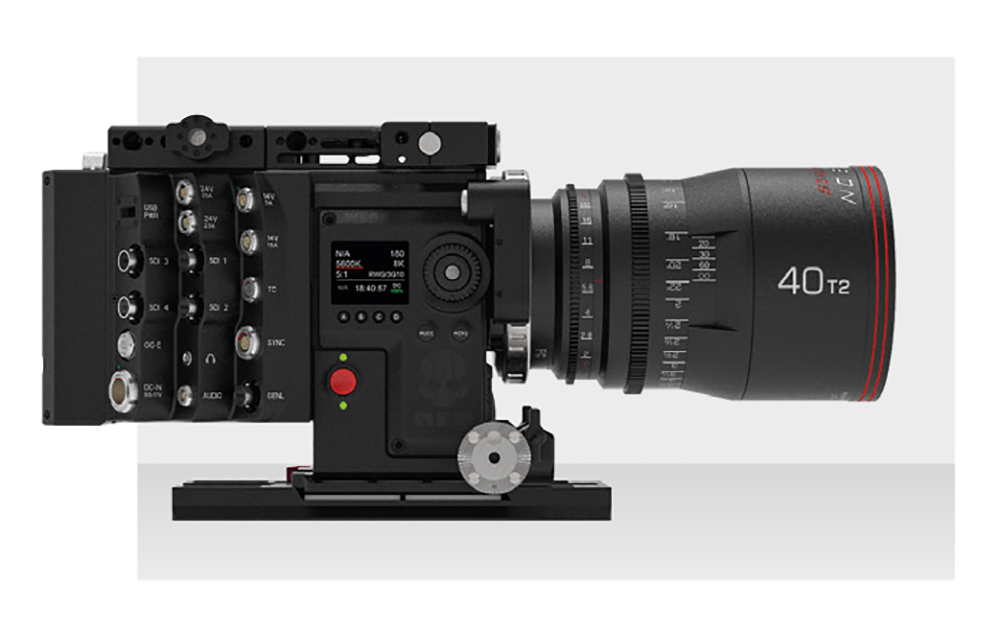
Science project
Posted on Aug 14, 2019
Panavision scooped the award for colour science in our Tech Innovation Awards by bolstering its DXL2 digital camera with some high-end and very usable look management
 Panavision’s DXL2 digital camera with award-winning LiColor2 on-board
Panavision’s DXL2 digital camera with award-winning LiColor2 on-board
View this post on Instagram
Questions / Julian Mitchell
Traditionally if you ask a DOP about manipulation of colour within their camera, they will say they do it with filters, lighting and the grade. But with LiColor2, there is now a whole lot of extra help for Panavision’s DXL2. We asked two DOPs, Brett Pawlak and Pawel Pogorzelski, about their experience with the new colour science that now resides in the camera.
Definition: What does LiColor2 give you that Red’s IPP2 image processing can’t?
BRETT PAWLAK: I’ll be honest, I’m not a technical person. I don’t have a clue as to how you even begin to explore colour science within different sensors. Inherently, we all know that sensors are just gathering information – ‘metadata’ to be interpreted how that specific camera looks. As long as a sensor can gather the information required, I’ve never shied away from any specific camera or sensor.
So for me, it’s a blessing to have such amazingly talented and smart friends who know how to do those things. I’ve worked with Light Iron, specifically Ian Vertovec [co-founder of Light Iron] on more than a dozen projects over the years. When I first got my hands on the LiColor2, it fitted like a glove. LiColor2 gives me a baked-in ‘look’ – that would usually be my first correction when sent to the lab for dailies and when I get to the final colour. So right off the bat, aesthetically I enjoy the ‘look’ it creates.
From a very layman’s or basic take, LiColor2 takes away some of the attributes of other sensors that sometimes aren’t favourable. The way it reacts to certain saturated colours, or how the sensor handles low exposure and noise in the toe for instance. I shoot pretty low from an exposure standpoint and whatever they have been able to do with the LiColor2 and underexposure for me is incredible.
I’ve pushed it much further than a Red or Alexa and have been able to pull back some acceptable detail that I swore off as completely gone.
I have been fortunate to have Ian colour the majority of my projects and we tend to have the same taste in aesthetics. Working with someone so often, you form a sort of shorthand. Over time, I realised that we would initially correct Red/Alexa footage pretty similarly, regardless of what aesthetic we were going for on a particular project.
PAWEL POGORZELSKI: I am not a technical DOP. I know most of the basics, but I make decisions using my gut and the feeling a sensor gives me for a particular project. I don’t like the way the Red camera looks, so when I first tested the cameras (film, Alexa and DXL2) for the film Midsommar, I was apprehensive about the DXL2 as I knew it had a Red sensor. I tested the cameras in Los Angeles in February last year on a hot, sunny day with stand-ins dressed in white. Once I received the film footage back, I went to Panavision to watch the tests projected and was blown away by the latitude and colour rendition of the DXL2 sensor with LiColor science.
 Ian Vertovec (left) and Michael Cioni (right) with their Colour Science award
Ian Vertovec (left) and Michael Cioni (right) with their Colour Science award
Def: How easy is it to use LiColor2 through the DXL2 camera and what manipulation do you have?
BP: For me, LiColor2 is extremely easy to use. I don’t manipulate it too much, if any. The great thing about LiColor2 is that it gives me a good range to work within and feels like as close to the final as I can get on-set. I’ve only really made minor contrast, or saturation adjustments. But for me, it’s a ‘set it and forget it’ situation.
PP: The reference and idea with colour was to be inspired by (not emulate) three-strip Technicolor film. So, colour manipulation was very important. Get rich, saturated colours without making them feel garish. We had a beautiful LUT created by Joe Gawler at Harbor and when we got into the colour grade, we had a lot of leeway to play with. Midsommar is very rich, but the skin tones look amazing and the green looks really great. I only mention this, because I feel that green grass is really difficult to get right on digital.
Using LiColor2 on-set makes me confident to push the boundaries, knowing I will have what I need in the grade. I can see clearly the richness in the colour rendition.
DEF: Is using LiColor2 all about film stock simulation/rendering on-set and not through a later DI?
BP: Using LiColor2 was the first time that, throughout the entire workflow – from photography to editorial and final colour – I found myself in the position where the director and studio were on-board with matching the final grade to the dailies.
As I mentioned earlier, I do very little manipulation to the LiColor2 at all when I’m on-set. For me, it’s not specifically about a film stock simulation, or nailing a look on-set as opposed to a DI. The fact that the LiColor2 really fits with my photography is like finding a film stock that I truly understand.
I can shoot it in multiple situations and trust it. But that ties in with my whole approach to lighting, colour and, of course, personal preference. So much so that when I shoot with the Alexa or Red I have a LiColor2 LUT that simulates the LiColor2 in those sensors, and it works really well for me. Panavision LiColor2 has allowed me to create a look on-set that carries over into the final DI.
Def: How do you think LiColor2 will evolve and could it replace certain grading processes?
BP: I don’t think the LiColor2 will replace any specific grading process, but in it, I have found my ‘favourite stock’. Ian shows me constant tweaks he is making to it, in ways it handles colours and highlights, and it’s really exciting to see it develop and evolve. Interestingly enough, I think the evolution for me and LiColor2 in general is the ability to have a LiColor2 toolkit. Each evolution will be a better version of the last. But there are great things about each version. And to potentially have a family of colours to use on a given film gives me more confidence in each situation. I’ve pushed the LiColor2 pretty far in the DXL and the results honestly blew me away. What Ian, Michael Cioni [co-founder of Light Iron] and the team at Panavision and Light Iron have created fills a spot that I was personally searching a long time for.








